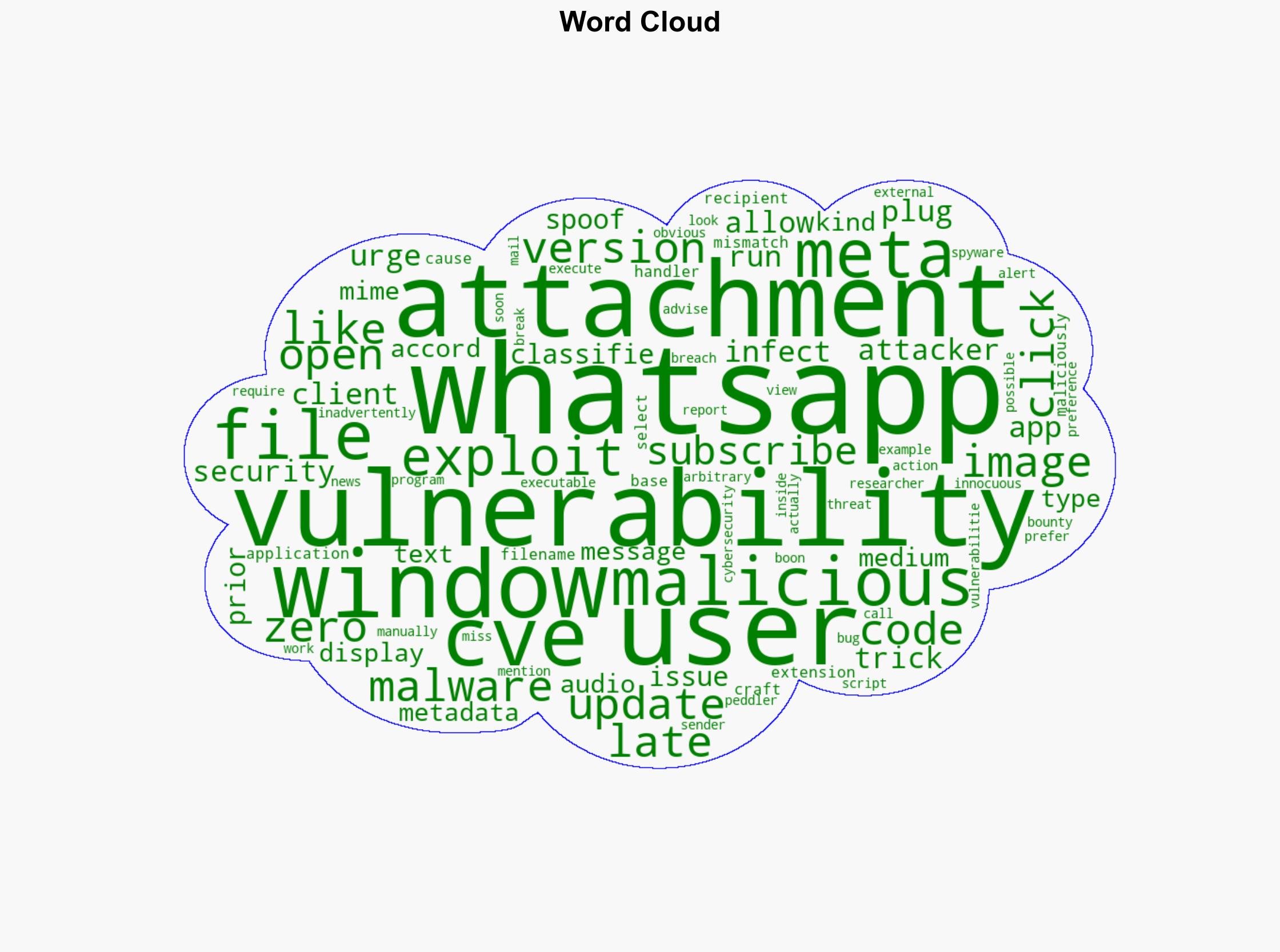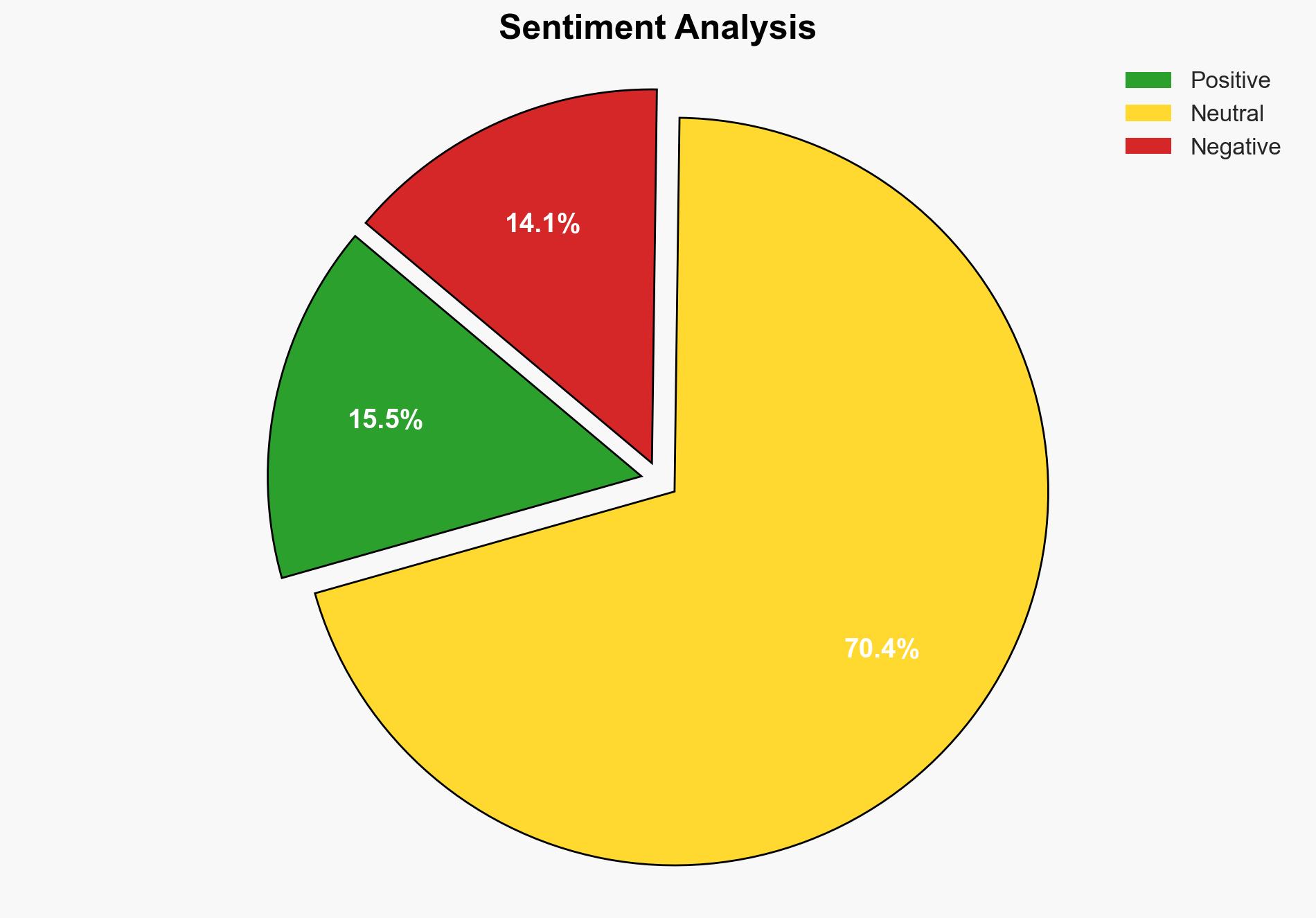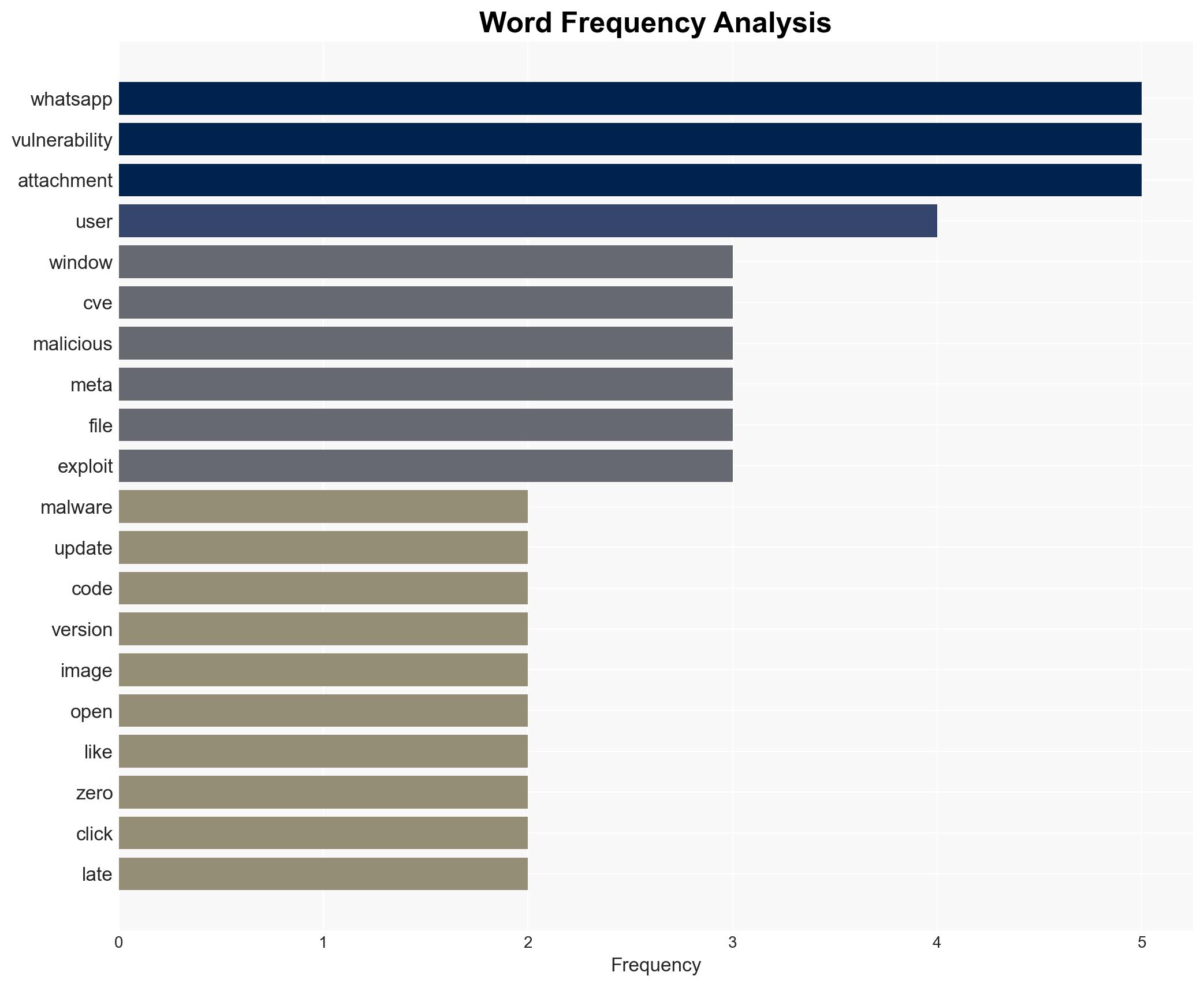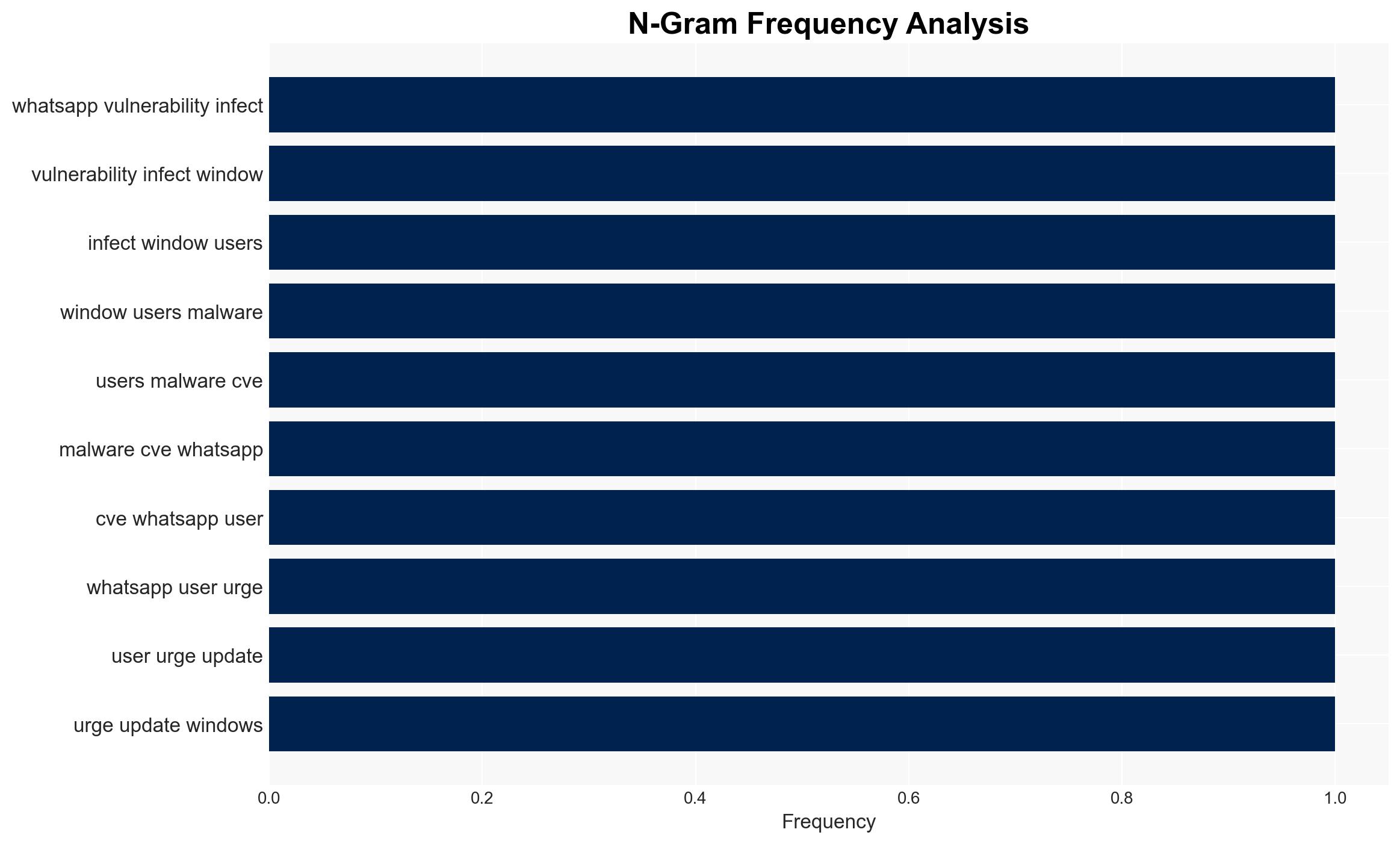WhatsApp vulnerability could be used to infect Windows users with malware CVE-2025-30401 – Help Net Security
Published on: 2025-04-09
Intelligence Report: WhatsApp Vulnerability Could Be Used to Infect Windows Users with Malware CVE-2025-30401 – Help Net Security
1. BLUF (Bottom Line Up Front)
A critical vulnerability (CVE-2025-30401) in WhatsApp for Windows allows attackers to execute malicious code by exploiting a spoofing issue related to file attachments. Users are strongly advised to update their applications to the latest version to mitigate this risk.
2. Detailed Analysis
The following structured analytic techniques have been applied for this analysis:
General Analysis
The vulnerability arises from a mismatch between the MIME type and the file extension, potentially leading to arbitrary code execution. This flaw was reported by an external researcher and has not yet been exploited in the wild. The vulnerability is significant due to its potential to be used in malware distribution, though it requires user interaction to be effective.
3. Implications and Strategic Risks
The vulnerability poses a risk to individual users and organizations using WhatsApp for Windows, potentially leading to data breaches or system compromises. The broader implications include threats to national cybersecurity and economic interests if exploited on a large scale. The preference for zero-click exploits by attackers highlights the need for vigilance and timely updates.
4. Recommendations and Outlook
Recommendations:
- Users should immediately update WhatsApp for Windows to the latest version to prevent exploitation.
- Organizations should implement regular software update protocols and educate users on recognizing suspicious attachments.
- Consideration for regulatory frameworks to mandate timely vulnerability disclosures and patches by software developers.
Outlook:
Best-case scenario: Rapid adoption of updates mitigates the threat without any reported exploitation.
Worst-case scenario: Delays in patching lead to widespread exploitation, resulting in significant data breaches.
Most likely scenario: Gradual update adoption limits exploitation, with isolated incidents reported.
5. Key Individuals and Entities
The report mentions Meta and an external researcher as significant entities involved in the identification and reporting of the vulnerability.




